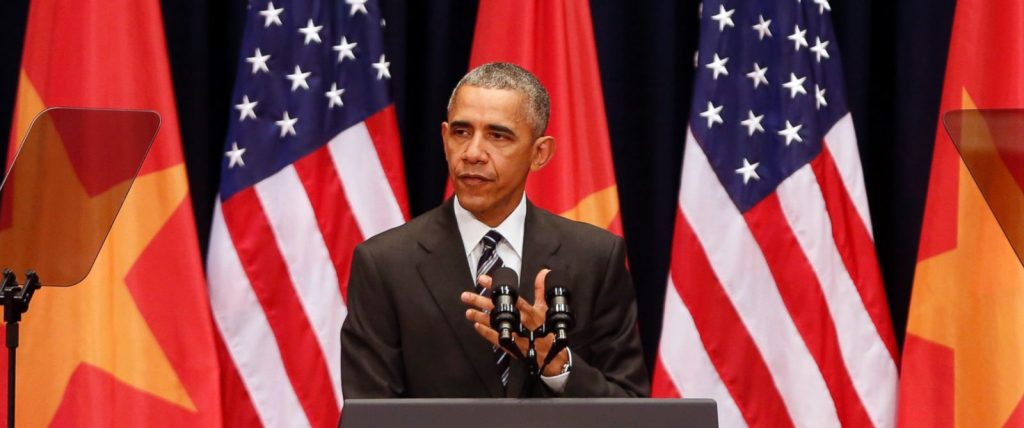
VOX | Jun 02, 2016
During President Barack Obama’s visit to Vietnam last month, he announced the end of Washington’s longstanding arms embargo against the country. Officially, the United States has always maintained that ending the embargo would be contingent upon Vietnam improving its human rights record. But despite lifting the embargo, Obama toldthe Vietnamese people that the country’s human rights record is “an area where we still have differences.”
This is all rather farcical. The framing of the issue itself is ridiculous: In order for a country to receive technology expressly designed for the purpose of killing other human beings, it must first demonstrate its commitment to human rights.
Moreover, the United States is the world’s leading arms exporter and regularly sells and provides arms to some of the world’s worst dictatorships and human rights offenders.
Most importantly, however, is the hypocrisy on display. Vietnam certainly has its human rights issues, but the US record in the region is not exactly a pretty one: After aiding France’s failed efforts to retake its former colonies, the United States began its own bloody campaigns in Vietnam, Laos, and Cambodia, resulting in millions dead and injured because of massive bombing runs, a series of massacres and atrocities, and the spraying of millions of gallons of herbicides, including Agent Orange.
Despite a formal end to the American war in Vietnam in 1975, hundreds of thousands of people have suffered — and continue to suffer — as a result of the invasion. Across Vietnam, Laos, and Cambodia, people are still dying and being maimed by American bombs that failed to explode on impact during the war. And across Vietnam, people are still coping with disabilities and birth defects caused by Agent Orange and other herbicides.
I have seen this suffering firsthand in Vietnam, Laos, and Cambodia. And although the US government has belatedly and begrudgingly provided assistance to alleviate some of these problems, it is not nearly enough.
Unexploded ordnance: a deadly legacy
I had heard of the problem of unexploded ordnance before arriving in Vietnam for the first time in 2014 to witness the legacy of the country with my own eyes. But seeing the scale of the problem — and the inhumane legacy of the bombing — was still a shock. It is easy to intellectualize a problem from far away, but to actually witness the living nightmare that others go through on a daily basis is something else.
Vietnam, Cambodia, and Laos all have serious problems with unexploded ordnance — bombs that failed to explode when initially dropped but still lurk beneath the surface, waiting to explode when stumbled upon.
In Vietnam, for example, it is estimated that 40,000 people have been killed these bombs since the end of the war, with another 65,000 injured. In Cambodia, 64,000 people have been killed or injured by unexploded ordnance since 1979 (though a substantial portion of these bombs in Cambodia were laid as landmines by the Khmer Rouge or the Cambodian government throughout the 1970s and ’80s).

Cluster bombs recovered in Laos. (Brett S. Morris)
Laos was especially hard hit. According to the Mines Advisory Group (the preeminent humanitarian organization working to clear land mines and other unexploded ordnance), Laos is the most heavily bombed country, per capita, in history. The United States dropped more than 2 million tons of bombs on Laos from 1964 to 1973 — more than 12 times what the US dropped on Japan during World War II. One purpose of the bombing was to target Vietnamese communist forces along the Ho Chi Minh Trail, as well as their communist Laotian allies, the Pathet Lao.
But the reasons went beyond this. When Lyndon Johnson announced a halt to the bombing of North Vietnam in 1968, the bombing of Laos sharply escalated. Asked why this was the case during Senate testimony, Deputy Chief of Mission Monteagle Stearnsresponded, “Well, we had all those planes sitting around and couldn’t just let them stay there with nothing to do.”
The bombing campaign had devastating consequences. Fred Branfman, a US aid worker living in Laos during the war, stumbled upon refugees fleeing the bombings. Branfman, who spoke Laotian, decided to collect and record their testimony into a book, published as Voices From the Plain of Jars.(The Plain of Jars refers to an area in Laos that contains ancient archeological stone jars and also was the target of some of the most ferocious bombing.) Branfman’s work helped expose the “secret war” in Laos, which had been hidden from the public by US officials.
As a 39-year-old rice farmer told Branfman:
The planes bombed every day. After they bombed my village, they bombed the roads and the small paths, and also completely destroyed our ricefields. After that we had to dig other holes even further away because we were so afraid. On the days that the airplanes would come we were so afraid we didn’t want to eat. I pitied my children, for when the air planes came to bomb my ricefields, they were afraid and afterwards would weep loudly. I was very afraid and could not even close my eyes to sleep.
Despite the end of the bombing in 1973 and the end of the war in 1975, however, life would never be normal for Laotians, for whom the prospect of stepping on an unexploded bomb dropped by the Americans decades ago could happen at any moment. More than 20,000 people have been killed or injured by unexploded ordnance in Laos since the end of the bombing.
Especially deadly are cluster bombs — small, round bombs that were dropped in casings and meant to be spread over a large area to cause maximum damage. Children often pick them up thinking they are toys — indeed, 40 percent of unexploded ordnance victims in Laos are children, and more than half the world’s cluster munition casualties have occurred in Laos.
When I visited Phonsavan in 2014 (the capital of Xiangkhouang Province and located near the Plain of Jars), I paid a visit to the Quality of Life Association, a local civil society organization of Laotians helping other Laotians injured by unexploded bombs. It functions as a support network by bringing survivors together and providing monetary and other assistance to victims. Inside I found a chalkboard with perhaps the saddest list I’ve ever read — of the most recent victims in the local area:

A chalkboard with the names of UXO survivors. (Brett S. Morris)
The list has surely been updated many times since I last saw it.
Agent Orange: continued suffering
Inside Vietnam’s War Remnants Museum in Ho Chi Minh City (formerly Saigon), there is a horrifying exhibit showcasing the disabilities and birth defects caused by Agent Orange. Photograph after photograph shows some strange disease or abnormality.
Apologists for the Vietnam War will claim that it is very difficult, if not impossible, to prove scientifically that any one person who has a genetic disorder or birth defect definitely contracted it because of exposure to Agent Orange or other herbicides sprayed by the United States during the war. How are we to know if someone just happened to be born with a certain disorder versus contracting the disorder due to exposure to Agent Orange?
However, there is a preponderance of evidence to indicate that the mass spraying of herbicides has indeed caused such problems. Between 1961 and 1971, the United States sprayed 20 million gallons of herbicides over South Vietnam to destroy crops and forest cover used by the Viet Cong, exposing millions of people to toxic chemicals.
Manufactured primarily by Monsanto and Dow Chemical on contract for the US Defense Department, Agent Orange (named after the orange-striped barrels it was shipped in) accounted for more than half of all herbicides sprayed during the war. Both companies and the US government claimed the herbicide was safe.
However, “there were two problems with the assertion, true enough on its face, that these were just your everyday weed killers,” writes journalist George Black in his in-depth investigation of the effects of Agent Orange and other herbicides on the Vietnamese:
First, they were sprayed on Vietnam in concentrations up to ten times higher than when used in the United States. More important, a combination of military imperatives and market forces turned them lethal. In the course of accelerated production, the Agent Orange was contaminated with an unwanted byproduct, 2,3,7,8-tetrachlorodibenzo-para-dioxin, or TCDD. This is sometimes referred to as the most toxic substance known to man, depositing itself in fat cells, disrupting hormone systems and triggering complex cellular and genetic changes. In the natural environment, dioxin can persist for decades, passing through soil into water, where it gloms on to organic matter in sediment and from there can move on up the food chain.
For its part, the Vietnamese Red Cross estimates 3 million people have been affected by Agent Orange, including 150,000 children born with birth defects. Multiple studies have found elevated levels of TCDD in Vietnamese citizens, as well as an increased risk ofbirth defects with parental exposure to Agent Orange.
There are multiple diseases and birth defects associated with exposure to Agent Orange. In the United States, the Department of Veterans Affairs officially recognizes 14 diseases, including some forms of cancer, as “presumptive diseases” (associated with exposure to Agent Orange or other herbicides). A veteran suffering from one of the diseases who can demonstrate he or she was exposed to Agent Orange under VA guidelines could receive compensation.
Likewise, the VA recognizes multiple birth defects in the children of veterans as either resulting from exposure to Agent Orange or “associated” with their military service in Vietnam, including spina bifida (incomplete closing of the spine), cleft lip and cleft palate, clubfoot, and syndactyly (fused digits).
The Vietnamese Red Cross maintains a similar but more expansive list of conditions associated with exposure to Agent Orange.

Children with birth defects related to Agent Orange exposure. (Brett S. Morris)
Walking the streets of Ho Chi Minh City — or anywhere else in Vietnam — one will come across those with such defects and diseases. Near Independence Palace, the former home of South Vietnam’s president and the place where the war finally ended when a North Vietnamese tank crashed through its gates, I saw a man begging for money. He had no arms, but did have hands where his shoulders were.
Of course, there was no way I could know for sure whether his condition was the result of being exposed to Agent Orange or not. What I did know was that there are many innocent people who, given the toxicity of the dioxin in Agent Orange, definitely aresuffering from its effects.
What I also knew was that given the level of carnage and destruction visited upon the people of Indochina, the United States is doing a pitifully poor job of properly helping the victims of the war.
Aiding the victims
After President Obama’s visit to Vietnam, he then went to Japan, becoming the first sitting US president to visit Hiroshima. There was much discussion of the possibility of an apology for the atomic bombing. For some reason, however, there was no discussion at all of the possibility of an apology for the pain the United States inflicted on Vietnam, Laos, and Cambodia.
More than an apology, however, what the people of the region could use are tangible resources to end the legacy of unexploded bombs and Agent Orange. The US has provided about $80 million to Vietnam, $85 million to Laos, and $100 million to Cambodia to date for unexploded ordnance removal. While this is better than nothing, it’s chump change for the US government.
Just since 2014, for example, the United States has spent $7.4 billion bombing ISIS in Iraq and Syria — more than 27 times what the US has spent to clean up its bombs in all three countries combined over the course of several decades.
Since 2007, the United States has appropriated $130 million to clean up dioxin “hot spots” — often former US military bases where Agent Orange and other herbicides were stored and shipped — and for health and disability programs for those living in areas contaminated with Agent Orange. This is progress. But the United States still refuses to explicitly acknowledge any links between exposure to Agent Orange and diseases and birth defects among the Vietnamese.
There is much more the United States can be doing for the people of Vietnam, Laos, and Cambodia. There is no reason we cannot afford to help the victims of the millions of bombs dropped and gallons of herbicides needlessly sprayed on them.
Not only is it possible to do so, but it is morally necessary. The people of Indochina may never get an apology, but the absolute least we can do is clean up the bombs dropped and the dioxin hot spots, and provide compensation for the victims.
Brett S. Morris is a freelance writer and journalist covering US foreign policy and its effects on people living abroad. He is the author of 21 Lies They Tell You About American Foreign Policy. Follow him on his website, Twitter, and Facebook.
Height Insoles: Hi, I do believe this is an excellent site. I stumbledupon …
http://fishinglovers.net: Appreciate you sharing, great post.Thanks Again. Keep writi…
Achilles Pain causes: Every weekend i used to pay a quick visit this site, as i w…

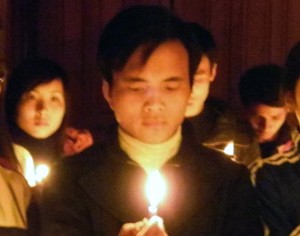
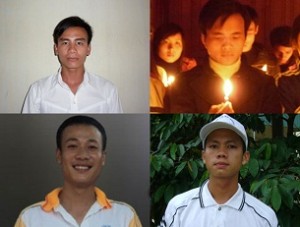
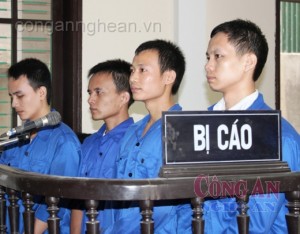

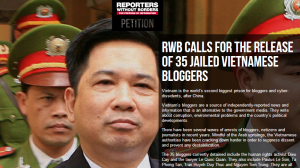
June 3, 2016
Agent Orange and unexploded bombs: America’s “human rights” record in Vietnam
by Nhan Quyen • [Human Rights]
VOX | Jun 02, 2016
During President Barack Obama’s visit to Vietnam last month, he announced the end of Washington’s longstanding arms embargo against the country. Officially, the United States has always maintained that ending the embargo would be contingent upon Vietnam improving its human rights record. But despite lifting the embargo, Obama toldthe Vietnamese people that the country’s human rights record is “an area where we still have differences.”
This is all rather farcical. The framing of the issue itself is ridiculous: In order for a country to receive technology expressly designed for the purpose of killing other human beings, it must first demonstrate its commitment to human rights.
Moreover, the United States is the world’s leading arms exporter and regularly sells and provides arms to some of the world’s worst dictatorships and human rights offenders.
Most importantly, however, is the hypocrisy on display. Vietnam certainly has its human rights issues, but the US record in the region is not exactly a pretty one: After aiding France’s failed efforts to retake its former colonies, the United States began its own bloody campaigns in Vietnam, Laos, and Cambodia, resulting in millions dead and injured because of massive bombing runs, a series of massacres and atrocities, and the spraying of millions of gallons of herbicides, including Agent Orange.
Despite a formal end to the American war in Vietnam in 1975, hundreds of thousands of people have suffered — and continue to suffer — as a result of the invasion. Across Vietnam, Laos, and Cambodia, people are still dying and being maimed by American bombs that failed to explode on impact during the war. And across Vietnam, people are still coping with disabilities and birth defects caused by Agent Orange and other herbicides.
I have seen this suffering firsthand in Vietnam, Laos, and Cambodia. And although the US government has belatedly and begrudgingly provided assistance to alleviate some of these problems, it is not nearly enough.
Unexploded ordnance: a deadly legacy
I had heard of the problem of unexploded ordnance before arriving in Vietnam for the first time in 2014 to witness the legacy of the country with my own eyes. But seeing the scale of the problem — and the inhumane legacy of the bombing — was still a shock. It is easy to intellectualize a problem from far away, but to actually witness the living nightmare that others go through on a daily basis is something else.
Vietnam, Cambodia, and Laos all have serious problems with unexploded ordnance — bombs that failed to explode when initially dropped but still lurk beneath the surface, waiting to explode when stumbled upon.
In Vietnam, for example, it is estimated that 40,000 people have been killed these bombs since the end of the war, with another 65,000 injured. In Cambodia, 64,000 people have been killed or injured by unexploded ordnance since 1979 (though a substantial portion of these bombs in Cambodia were laid as landmines by the Khmer Rouge or the Cambodian government throughout the 1970s and ’80s).
Cluster bombs recovered in Laos. (Brett S. Morris)
Laos was especially hard hit. According to the Mines Advisory Group (the preeminent humanitarian organization working to clear land mines and other unexploded ordnance), Laos is the most heavily bombed country, per capita, in history. The United States dropped more than 2 million tons of bombs on Laos from 1964 to 1973 — more than 12 times what the US dropped on Japan during World War II. One purpose of the bombing was to target Vietnamese communist forces along the Ho Chi Minh Trail, as well as their communist Laotian allies, the Pathet Lao.
But the reasons went beyond this. When Lyndon Johnson announced a halt to the bombing of North Vietnam in 1968, the bombing of Laos sharply escalated. Asked why this was the case during Senate testimony, Deputy Chief of Mission Monteagle Stearnsresponded, “Well, we had all those planes sitting around and couldn’t just let them stay there with nothing to do.”
The bombing campaign had devastating consequences. Fred Branfman, a US aid worker living in Laos during the war, stumbled upon refugees fleeing the bombings. Branfman, who spoke Laotian, decided to collect and record their testimony into a book, published as Voices From the Plain of Jars.(The Plain of Jars refers to an area in Laos that contains ancient archeological stone jars and also was the target of some of the most ferocious bombing.) Branfman’s work helped expose the “secret war” in Laos, which had been hidden from the public by US officials.
As a 39-year-old rice farmer told Branfman:
Despite the end of the bombing in 1973 and the end of the war in 1975, however, life would never be normal for Laotians, for whom the prospect of stepping on an unexploded bomb dropped by the Americans decades ago could happen at any moment. More than 20,000 people have been killed or injured by unexploded ordnance in Laos since the end of the bombing.
Especially deadly are cluster bombs — small, round bombs that were dropped in casings and meant to be spread over a large area to cause maximum damage. Children often pick them up thinking they are toys — indeed, 40 percent of unexploded ordnance victims in Laos are children, and more than half the world’s cluster munition casualties have occurred in Laos.
When I visited Phonsavan in 2014 (the capital of Xiangkhouang Province and located near the Plain of Jars), I paid a visit to the Quality of Life Association, a local civil society organization of Laotians helping other Laotians injured by unexploded bombs. It functions as a support network by bringing survivors together and providing monetary and other assistance to victims. Inside I found a chalkboard with perhaps the saddest list I’ve ever read — of the most recent victims in the local area:
A chalkboard with the names of UXO survivors. (Brett S. Morris)
The list has surely been updated many times since I last saw it.
Agent Orange: continued suffering
Inside Vietnam’s War Remnants Museum in Ho Chi Minh City (formerly Saigon), there is a horrifying exhibit showcasing the disabilities and birth defects caused by Agent Orange. Photograph after photograph shows some strange disease or abnormality.
Apologists for the Vietnam War will claim that it is very difficult, if not impossible, to prove scientifically that any one person who has a genetic disorder or birth defect definitely contracted it because of exposure to Agent Orange or other herbicides sprayed by the United States during the war. How are we to know if someone just happened to be born with a certain disorder versus contracting the disorder due to exposure to Agent Orange?
However, there is a preponderance of evidence to indicate that the mass spraying of herbicides has indeed caused such problems. Between 1961 and 1971, the United States sprayed 20 million gallons of herbicides over South Vietnam to destroy crops and forest cover used by the Viet Cong, exposing millions of people to toxic chemicals.
Manufactured primarily by Monsanto and Dow Chemical on contract for the US Defense Department, Agent Orange (named after the orange-striped barrels it was shipped in) accounted for more than half of all herbicides sprayed during the war. Both companies and the US government claimed the herbicide was safe.
However, “there were two problems with the assertion, true enough on its face, that these were just your everyday weed killers,” writes journalist George Black in his in-depth investigation of the effects of Agent Orange and other herbicides on the Vietnamese:
For its part, the Vietnamese Red Cross estimates 3 million people have been affected by Agent Orange, including 150,000 children born with birth defects. Multiple studies have found elevated levels of TCDD in Vietnamese citizens, as well as an increased risk ofbirth defects with parental exposure to Agent Orange.
There are multiple diseases and birth defects associated with exposure to Agent Orange. In the United States, the Department of Veterans Affairs officially recognizes 14 diseases, including some forms of cancer, as “presumptive diseases” (associated with exposure to Agent Orange or other herbicides). A veteran suffering from one of the diseases who can demonstrate he or she was exposed to Agent Orange under VA guidelines could receive compensation.
Likewise, the VA recognizes multiple birth defects in the children of veterans as either resulting from exposure to Agent Orange or “associated” with their military service in Vietnam, including spina bifida (incomplete closing of the spine), cleft lip and cleft palate, clubfoot, and syndactyly (fused digits).
The Vietnamese Red Cross maintains a similar but more expansive list of conditions associated with exposure to Agent Orange.
Children with birth defects related to Agent Orange exposure. (Brett S. Morris)
Walking the streets of Ho Chi Minh City — or anywhere else in Vietnam — one will come across those with such defects and diseases. Near Independence Palace, the former home of South Vietnam’s president and the place where the war finally ended when a North Vietnamese tank crashed through its gates, I saw a man begging for money. He had no arms, but did have hands where his shoulders were.
Of course, there was no way I could know for sure whether his condition was the result of being exposed to Agent Orange or not. What I did know was that there are many innocent people who, given the toxicity of the dioxin in Agent Orange, definitely aresuffering from its effects.
What I also knew was that given the level of carnage and destruction visited upon the people of Indochina, the United States is doing a pitifully poor job of properly helping the victims of the war.
Aiding the victims
After President Obama’s visit to Vietnam, he then went to Japan, becoming the first sitting US president to visit Hiroshima. There was much discussion of the possibility of an apology for the atomic bombing. For some reason, however, there was no discussion at all of the possibility of an apology for the pain the United States inflicted on Vietnam, Laos, and Cambodia.
More than an apology, however, what the people of the region could use are tangible resources to end the legacy of unexploded bombs and Agent Orange. The US has provided about $80 million to Vietnam, $85 million to Laos, and $100 million to Cambodia to date for unexploded ordnance removal. While this is better than nothing, it’s chump change for the US government.
Just since 2014, for example, the United States has spent $7.4 billion bombing ISIS in Iraq and Syria — more than 27 times what the US has spent to clean up its bombs in all three countries combined over the course of several decades.
Since 2007, the United States has appropriated $130 million to clean up dioxin “hot spots” — often former US military bases where Agent Orange and other herbicides were stored and shipped — and for health and disability programs for those living in areas contaminated with Agent Orange. This is progress. But the United States still refuses to explicitly acknowledge any links between exposure to Agent Orange and diseases and birth defects among the Vietnamese.
There is much more the United States can be doing for the people of Vietnam, Laos, and Cambodia. There is no reason we cannot afford to help the victims of the millions of bombs dropped and gallons of herbicides needlessly sprayed on them.
Not only is it possible to do so, but it is morally necessary. The people of Indochina may never get an apology, but the absolute least we can do is clean up the bombs dropped and the dioxin hot spots, and provide compensation for the victims.
Brett S. Morris is a freelance writer and journalist covering US foreign policy and its effects on people living abroad. He is the author of 21 Lies They Tell You About American Foreign Policy. Follow him on his website, Twitter, and Facebook.